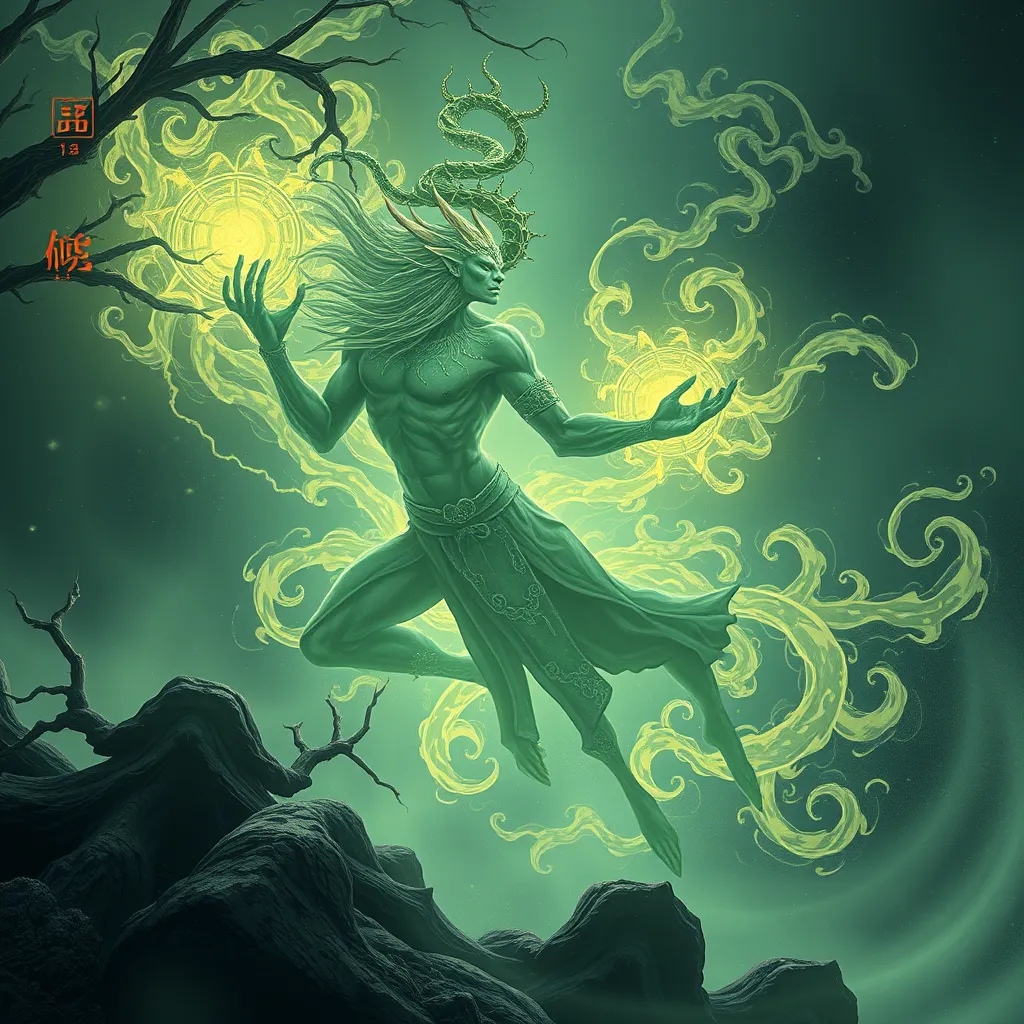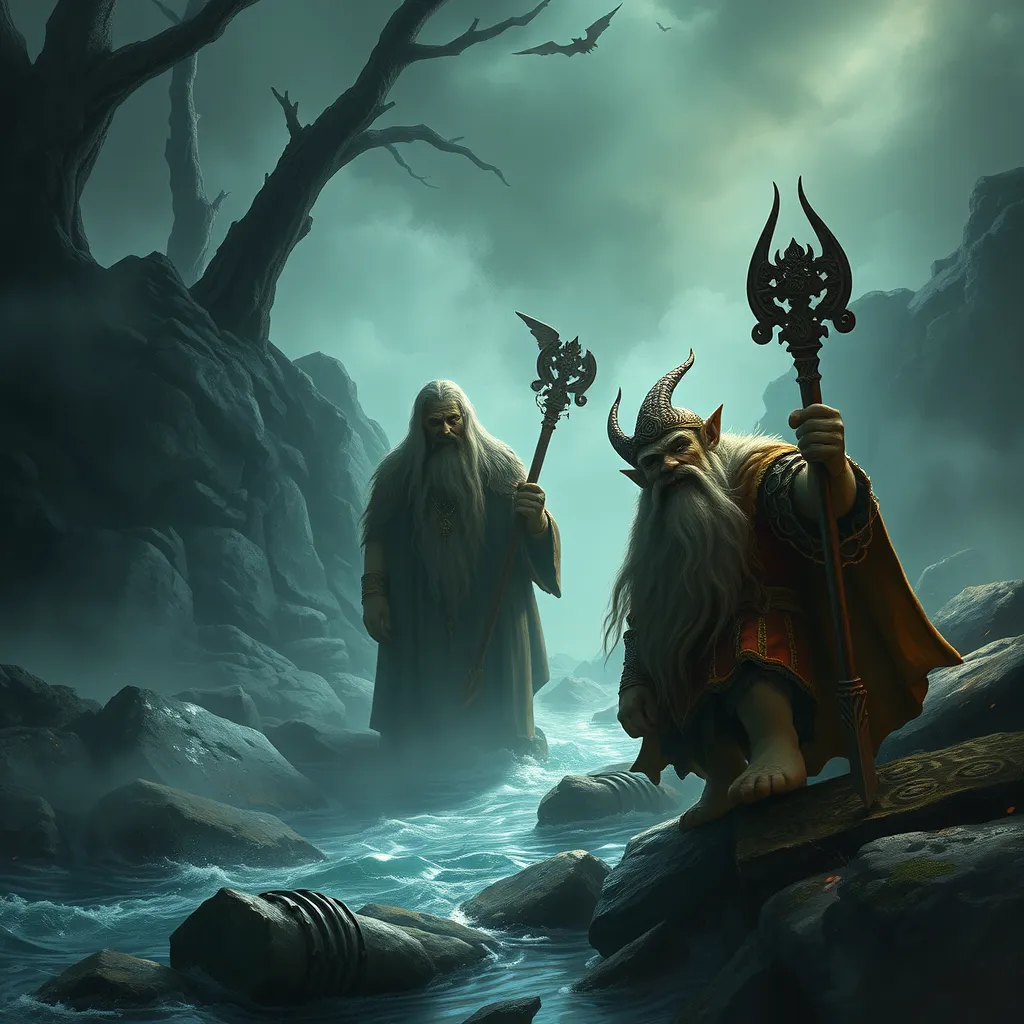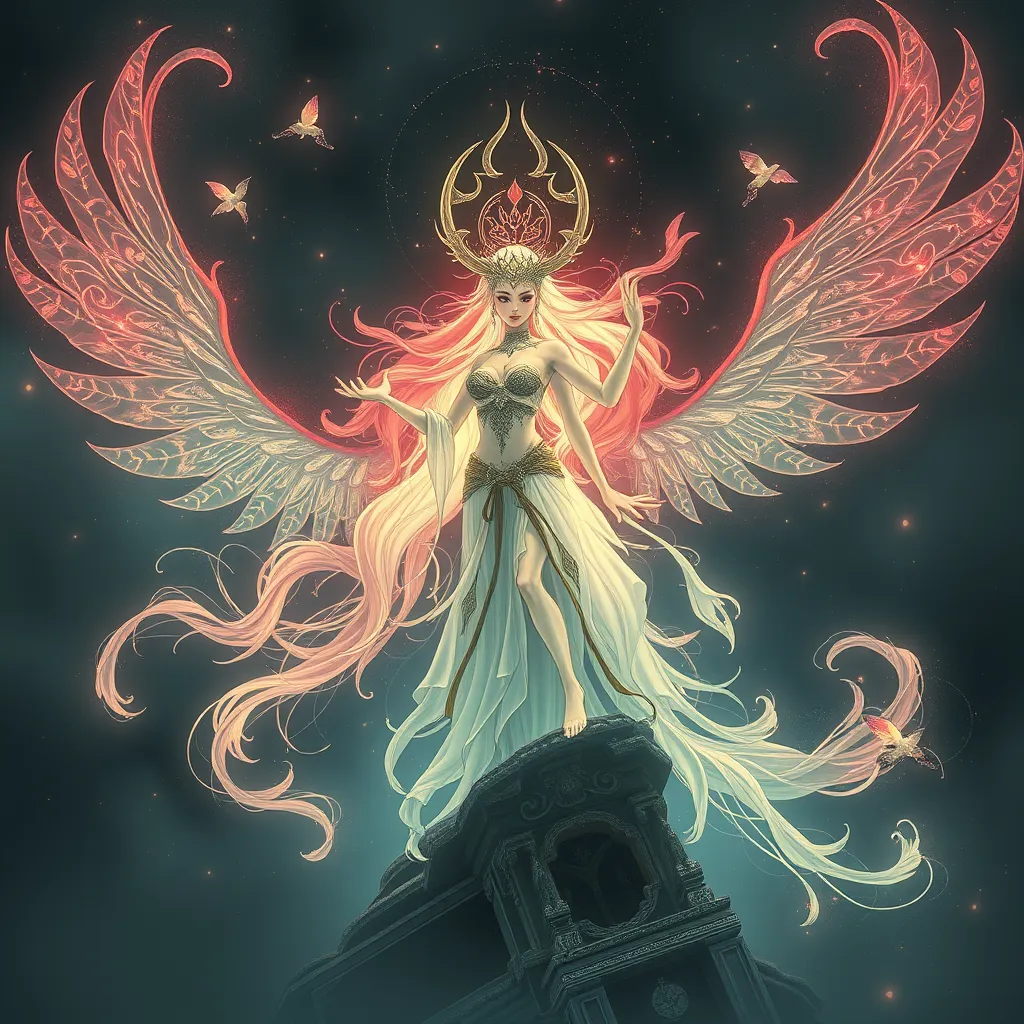The Jinn in Chinese Mythology: Spirits of Nature and the Supernatural
I. Introduction
In various cultures, the concept of Jinn—supernatural beings often associated with natural elements—holds significant importance. Originating from Arabian folklore, Jinn are frequently depicted as spirits capable of influencing human affairs and the environment. In Chinese mythology, spirits play a similarly pivotal role, embodying the essence of nature and the supernatural. This article aims to explore the representation of Jinn within the context of Chinese mythology, examining their historical significance, characteristics, cultural practices, and relevance in contemporary society.
II. Historical Context of Jinn in Chinese Culture
The origins of Jinn in China can be traced back to ancient beliefs that integrated elements of animism and shamanism. Over centuries, these beliefs evolved through the influences of Buddhism, Taoism, and Confucianism, which shaped the perception of Jinn as spirits that could either assist or hinder human endeavors.
- Buddhism: Introduced concepts of karma and reincarnation, influencing the moral dimensions associated with Jinn.
- Taoism: Emphasized harmony with nature, which aligned closely with the protective roles of Jinn as guardians of the environment.
- Confucianism: Focused on social order and morality, often portraying Jinn in relation to human ethical behavior.
When comparing Jinn in Chinese mythology to those in other cultures, notable differences emerge. In Middle Eastern traditions, Jinn are often seen as tricksters or malevolent spirits, while in Chinese folklore, they are frequently depicted as guardians or benefactors of nature.
III. Characteristics and Types of Jinn
Jinn possess diverse physical and metaphysical attributes, characterized by their connection to natural elements. In Chinese folklore, Jinn can be categorized into several types:
- Earth Spirits: Protectors of the land and soil, often associated with agriculture and fertility.
- Water Spirits: Guardians of rivers, lakes, and oceans, believed to influence weather and harvests.
- Fire Spirits: Associated with lightning and volcanic activity, representing transformation and renewal.
- Air Spirits: Linked to the winds and skies, embodying freedom and change.
Moreover, the dual nature of Jinn is a distinctive feature; they can be both benevolent and malevolent. While some Jinn offer protection and guidance, others may wreak havoc if disrespected or neglected.
IV. Jinn and Nature: Guardians of the Environment
In Chinese mythology, Jinn are often seen as protectors of natural elements. They embody the very essence of the environment, ensuring ecological balance and harmony. Numerous stories and legends illustrate this connection:
- The Legend of the Earth Spirit: A tale of a village that thrived due to the blessings of an earth spirit who protected the land from drought.
- The Water Guardian: A story about a spirit who calmed raging rivers, ensuring safe passage for fishermen and traders.
The symbolism of Jinn in relation to ecological balance emphasizes the need for respect towards nature. They serve as a reminder of the interconnectedness of all living beings and the importance of maintaining harmony with the environment.
V. Jinn in Chinese Literature and Art
Jinn have been depicted in classical Chinese literature, where they often serve as symbols of nature’s power and unpredictability. Texts like “The Classic of Mountains and Seas” highlight various spirits and their interactions with humans.
- Chinese Painting: Artists have historically portrayed Jinn in landscapes, representing their influence over natural phenomena.
- Sculpture and Folklore: Statues of Jinn can be found in temples, often serving as protective talismans.
In contemporary Chinese art, Jinn have been reinterpreted, blending traditional motifs with modern themes, often exploring the relationship between humanity and nature.
VI. Rituals and Practices Involving Jinn
Traditional rituals to honor or appease Jinn are integral to Chinese cultural practices. These rituals often include:
- Offerings of food and incense at natural sites, such as mountains and rivers.
- Festivals celebrating the spirits of nature, where community members gather to express gratitude.
Divination practices also play a role in seeking guidance from Jinn, as individuals often consult spiritual mediums to communicate with these entities. The role of Jinn in festivals illustrates their cultural significance, fostering community bonds and respect for nature.
VII. Jinn in Modern Chinese Society
In contemporary Chinese society, the relevance of Jinn persists, particularly in rural areas where traditional beliefs remain strong. Jinn continue to be invoked in spiritual practices and cultural celebrations, serving as a bridge between past and present.
- Modern Media: Jinn are depicted in films, literature, and television, often portrayed with a blend of traditional and contemporary characteristics.
- Spirituality and Environmentalism: The connection between Jinn and nature resonates with current environmental movements, as many advocate for a harmonious relationship with the earth.
VIII. Conclusion
In summary, Jinn play a significant role in Chinese mythology, embodying the spirits of nature and the supernatural. Their historical context, characteristics, and cultural significance highlight the ongoing importance of these entities in contemporary society. As interest in spirituality and environmental issues grows, the exploration of Jinn offers valuable insights into the relationship between humanity and the natural world, opening avenues for future research and understanding across global contexts.



